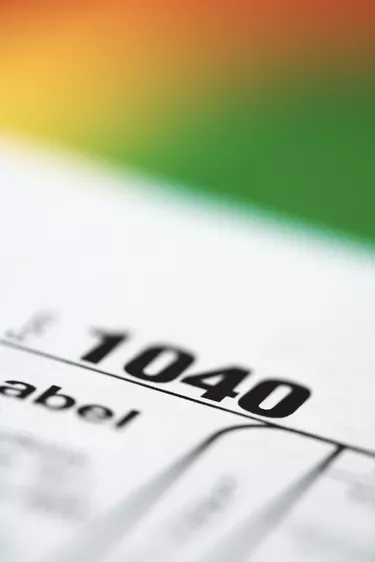
If you are a mortgage broker and you are struggling to close more loans, one skill that will put you over the hump is learning to accurately read a potential borrower's tax returns.
While tax returns are somewhat complicated, there are a few simple strategies you can employ to cut to the bottom line -- the total income. This is especially helpful when it comes to interpreting a Schedule C, the form self-employed borrowers must complete.
Video of the Day
Video of the Day
Step 1
Determine if your borrower is paid by an employer with a W2 and paycheck or if he is self-employed. This is a crucial step in deciphering tax returns. A self-employed borrower may pay himself with a check, but this does not necessarily mean he will collect a W2.
Step 2
Collect the borrower's full tax returns with all schedules. For self-employed borrowers, the most critical form will be the Schedule C. This form lists the total income of the business and the total income for the individual. The 1040 form is what is needed for W2 employees.
Step 3
Reconcile the figures on the 1040 form on lines 7 through 22 for borrowers who receive wages from an employer. Make sure to double-check both W2s if the application is joint. Make sure the figures on the W2s match line 7 on the 1040.
Step 4
Check line 22 to make sure the totals from the two applicants' W2s (if joint) match the figure listed on the 1040 Form. This is the total income for both parties. This is the amount of income you'll be using to calculate the DIR (debt to income ratio) on the mortgage application.
Step 5
Review the Schedule C if your borrower(s) is self-employed. This form breaks down the particulars of the borrower's business -- gross income, gross profit and compensation to employees.
Step 6
Do not use the income figure in line 1 to calculate income. This is the gross receipts for the business before any taxes, expenses and deductions. This figure is not an accurate representation of the borrower's take-home pay.
Step 7
Look at line 31 to find out the borrower's true income from the operation of the business. If the borrower has many deductions and is claiming many business expenses, this figure may be low. If it is low enough, it may disqualify him for the loan. If this is the case, you may need to verify true business cash flow with business bank statements.
Step 8
Add back the figure listed on line 30 -- business use of home. Most mortgage underwriters allow for this addition to calculate income.